The Ternopil Region was part of Habsburg Galicia and was an ethnic mix of mainly Roman Catholic Poles, Greek Catholic Ruthenians, and Jews. Intermarriage between Poles and Ruthenians was common.
The city of Ternopil is located on the banks of the Seret River. Until 1944, it was known mostly as Tarnopol having been founded in 1540 by Polish commander and Hetman Jan Amor Tarnowski, as a military stronghold and castle. Its Polish name “Tarnopol” means “Tarnowski’s city” and stems from a combination of the founder’s family name and the Greek term “polis”. The etymology of the Tarnowski family surname originates from the city of Tarnów in Poland.
In 1544 the Tarnopol Castle was completed and repelled the first of what would turn out to be many Tatar attacks lasting for the next 150 years. The city was later sacked for the last time by Tatars in 1694, and twice by Russians in the course of the Great Northern War in 1710 and the War of the Polish Succession in 1733.
In 1772, after the First Partition of Poland, the city came under Austrian rule. In 1809, after the War of the Fifth Coalition, the city came under Russian rule, incorporated into the newly created Ternopol krai. In 1815 the city (then with 11,000 residents) returned to Austrian rule in accordance with the Congress of Vienna.
During World War I the city passed from German and Austrian forces to Russia several times. In 1917 the city and its castle were burnt down by fleeing Russian forces. After the dissolution of the Austro-Hungarian Empire, the city was proclaimed as part of the West Ukrainian People’s Republic.
On 15 July 1919, the city was captured by Polish forces. In July and August 1920 the Red Army captured Tarnopol in the course of the Polish-Soviet War. The city then served as the capital of the Galician Soviet Socialist Republic. Although the Poles and their Ukrainian allies badly defeated the Russians on the battle field and the Russians had offered to cede Ukraine and Belarus, by the terms of the Riga treaty, the Soviets and Poles effectively partitioned Ukraine. For the next 19 years, the ethnically mixed Ternopol area remained in Polish control.
At the onset of World War II, the Soviet invasion of Poland began on September 17, 1939. The Red Army entered eastern Poland in furtherance of the secret Molotov–Ribbentrop Pact and contrary to the Soviet–Polish Non-Aggression Pact. Tarnopol was captured, renamed Ternopil, and incorporated into the Ukrainian Soviet Socialist Republic under Ternopil Oblast. The Soviets made it their first priority to decimate Polish intelligentsia and destroy Polish culture. Ukrainian nationalist leaders were imprisoned. Mass arrests, torture and executions of Ukrainians and Poles followed.
On 2 July 1941, the city was occupied by the Nazis who led the Jewish pogrom, and continued exterminating the population by creating the Tarnopol Ghetto. Thousands of Jews were murdered at the Belzec extermination camp. Many Ukrainians were sent to forced labour camps in Germany.
During the Soviet offensive in March and April 1944, the city was encircled. In March 1944, the city was declared a fortified place (Gates to the Reich) to be defended until the last round was fired. The stiff German resistance caused extensive use of heavy artillery by the Red Army resulting in the complete destruction of the city and killing of nearly all German occupants (55 survivors out of 4,500). Unlike many other occasions, where the Germans had practised a scorched earth policy during their withdrawal from territories of the Soviet Union, the devastation was caused directly by the hostilities with 85% of the city’s living quarters having been destroyed. Finally, Ternopil was occupied by the Red Army on 15 April 1944.
Following the defeat of Nazi Germany, the ethnic Polish population of Ternopil and its region was forcibly deported to postwar Poland and settled in, and near Wrocław (among other locations), as part of Stalinist ethnic cleansing in the Soviet Ukraine.
Following World War II, Poland’s borders were redrawn and Ternopil was incorporated into the Ukrainian SSR of the Soviet Union. Polish population was resettled back to new Poland before the end of 1946.
Following the fall of the Soviet Union in 1991, Ternopil has become part of the independent Ukraine.
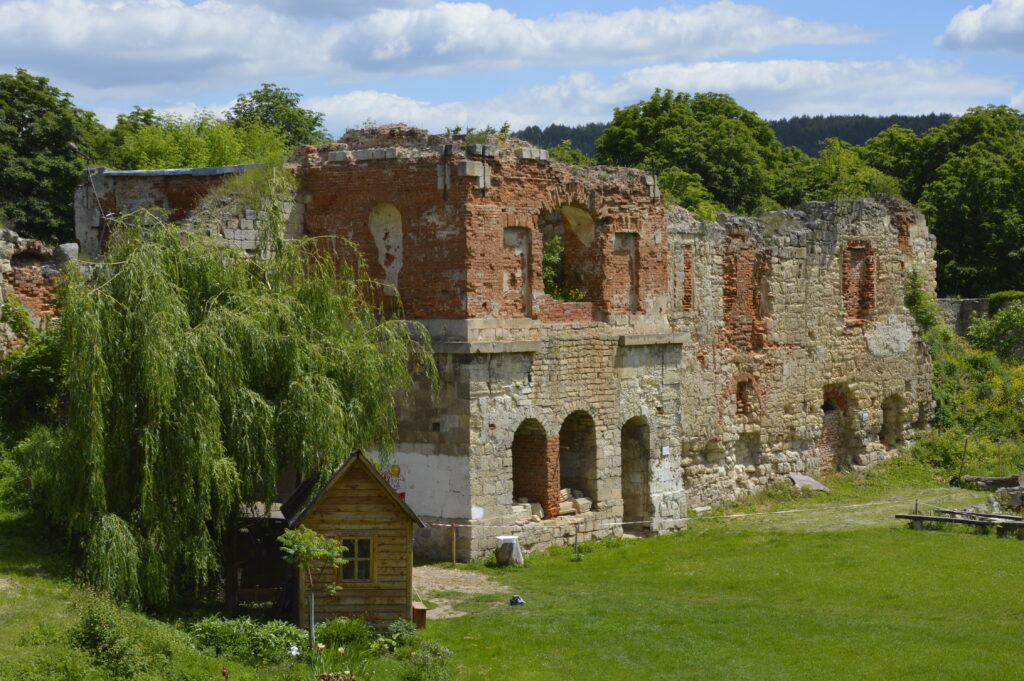
Berezhany Castle , around which the modern town of Berezhany (Polish: Brzeżany) has sprung up, was built on an island in the Zolota Lypa River in the 16h century by Mikołaj Sieniawski as the main residence of his family.
In the early 17th century one of Mikołaj Sieniawski’s grandsons, also named Mikołaj, fortified the city itself. The fortress withstood all attacks by Tatars and Cossacks until the Khmelnytsky Uprising of 1648, when it was captured by the Cossacks. In 1655 during The Deluge, it was again captured by the forces of Sweden and the city was again plundered. However, it was rebuilt afterwards and withstood further Cossack attacks in 1667 and 1672. The castle fell into neglect as the successors of the Sieniawski family, the Czartoryski and Lubomirski families, were owners of many more castles and had no interest in this one in particular. During World War I. the town of Berezhany was occupied by the Russians until ousted by the Austrians. After the war Poland was granted possession of the region by treaty until the Red Army briefly took the town only to have it recaptured by the Polish Army after the Battle of Warsaw. However, some of the most precious sculptures and paintings from the castle and local churches, were pillaged and re-located to Kraków, and never returned.
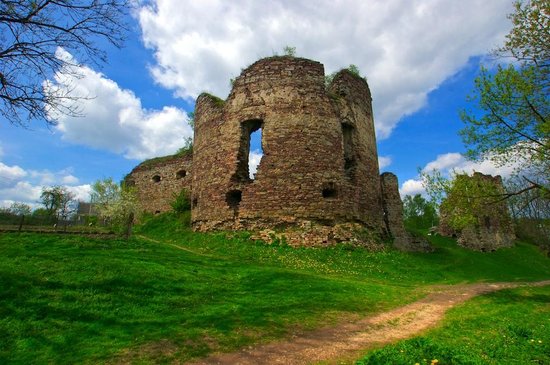 Buchach Castle is a ruin of a medieval castle, located in Buchach, Ternopil Oblast, Ukraine.
Buchach Castle is a ruin of a medieval castle, located in Buchach, Ternopil Oblast, Ukraine.
It was built by the Buchacki family in the 14-15th century at around the time the town was founded. It was rebuilt by the Potocki-Movile family in the 16-17th century in a Renaissance style.
It was a defensive structure, and saw combat several times. It fell into disrepair following its destruction by the Ottomans in the late 17th century.
During the 19th century, while under the Austrian partition, it was partially demolished to reclaim building material. Today, it is a tourist attraction open to visitors.
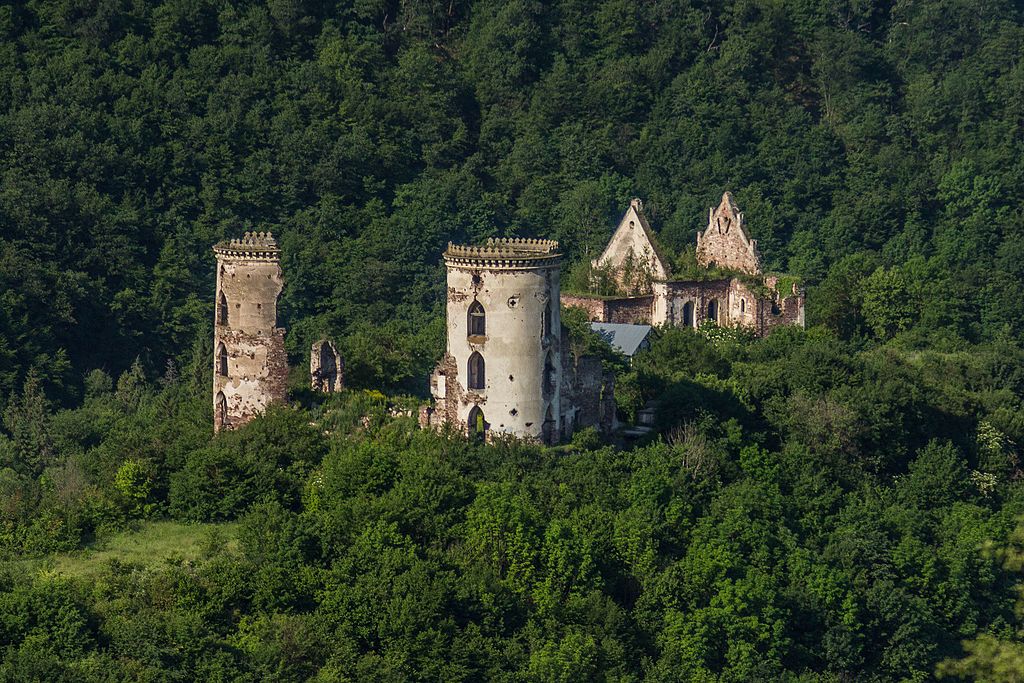
Chervonohorod Castle was built in the early 17th century as a seat of the Daniłowicz magnate family in the former town of Chervonohorod or Chervone (“Red Town” because of the color of the surrounding earth) in Zalishchyky Raion, Ternopil Oblast of Ukraine, that was part of the municipal district of Nyrkiv (Ни́рків). [Not to be confused with Chervonohrad – a mining city and the administrative center of Chervonohrad Raion, Lviv Oblast of western Ukraine.]
It was chartered in 1434 and was the seat of a powiat in the Podole Voivodeship. Prince Poniński acquired the ruined castle from the Habsburgs in 1778 and had it demolished.
A new princely residence was erected to replace it. The prince and his family were interred in the family vault, which boasted a relief commissioned from Bertel Thorvaldsen.
The Soviets dismantled the palace (apart from the two towers) and eventually even abolished the town itself, removing Chervonohorod from the map of the Ukrainian SSR.
Pochayiv Lavra Monastery. Holy Dormition Pochaiv Lavra is a monastery and lavra in Pochaiv, Kremenets Raion, Ternopil Oblast, Ukraine. The monastery belongs to the Ukrainian Orthodox Church. For centuries, it has been the foremost spiritual and ideological centre of various Orthodox and Eastern Catholic denominations in Western Ukraine.
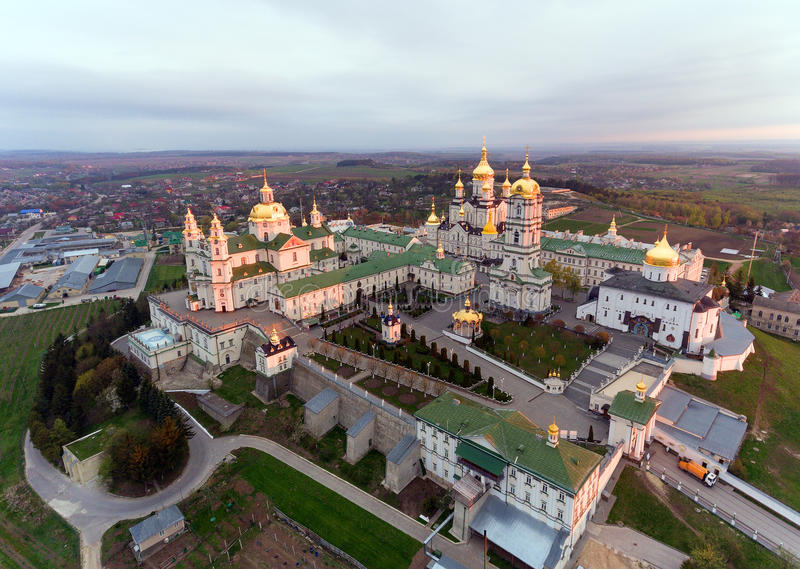 A first record of the monastery in Pochayiv dates back to 1527, although a local tradition claims that it was established three centuries earlier, during the Mongol invasion, by several runaway monks, either from the Kyiv Monastery of the Caves or from the Holy Mount Athos. The legend has it that the Theotokos [Mary, Mother of Jesus] appeared to the monks in the shape of a column of fire, leaving her footprint in the rock she stood upon. This imprint came to be revered by the local population and brethren for the curative, medicinal properties of the water that issued from it.
A first record of the monastery in Pochayiv dates back to 1527, although a local tradition claims that it was established three centuries earlier, during the Mongol invasion, by several runaway monks, either from the Kyiv Monastery of the Caves or from the Holy Mount Athos. The legend has it that the Theotokos [Mary, Mother of Jesus] appeared to the monks in the shape of a column of fire, leaving her footprint in the rock she stood upon. This imprint came to be revered by the local population and brethren for the curative, medicinal properties of the water that issued from it.
The monastery’s standing was further augmented in 1597, when a noble lady, Anna Hoyska, presented to the monastery her extensive lands and a miracle-working icon of the Theotokos. This image, traditionally known as Our Lady of Pochayiv, was given to Hojska by a passer-by Bulgarian bishop, and had helped to cure her brother from blindness.
In 1795 as a result of the Third Partition of Poland, Volhynia became a part of the Russian Empire. In 1831, Czar Nicholas I of Russia ordered the cloister be given to the adherents of the Russian Orthodox Church. Subsequently the monastery was reconsecrated as an Orthodox entity under the communion of the Moscovite Patriarchy thereby ending 110 years of Greek-Catholic monastic life. Towards the end of the 19th century, Pochayiv became a mecca of Orthodox pilgrims from across the Russian empire and the Balkans. Its politically symbolic image as a Western outpost of Russian imperial Orthodoxy was widely used in propagating Russo-oriented pan-slavism and still resonates as such today.
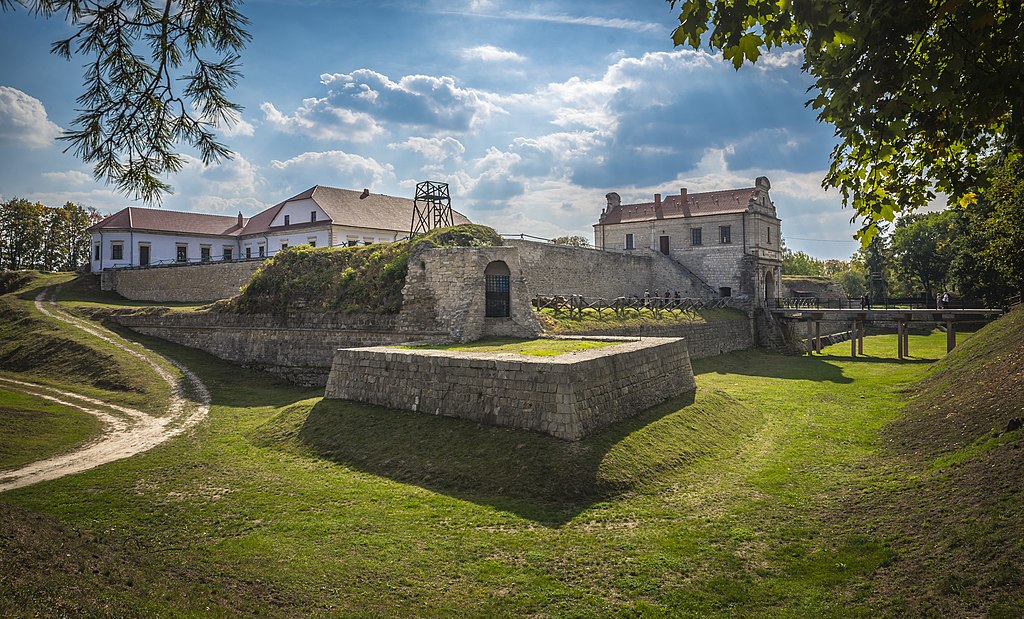 Zbarazh Castle is located in a park near the center of the town of Zbarazh in the central part of Ternopil Oblast, about 24 km northeast of Ternopil.
Zbarazh Castle is located in a park near the center of the town of Zbarazh in the central part of Ternopil Oblast, about 24 km northeast of Ternopil.
In 1649, this fortification played a key role during the uprising of the Zaporozhye Cossacks led by Bohdan Khmelnytsky. As a result of the siege of Zbarazh and the ensuing Battle of Zboriv fought between the combined Cossack-Crimean force and the Crown army of the Polish-Lithuanian Commonwealth, the Treaty of Zboriv was signed. In the 17th-18th centuries, the castle was attacked and looted several times. In 1675, it was surrendered to the Turks without a fight.
In 1935, the Polish Union of Reserve Officers was occupied with the restoration of Zbarazh castle, but these good intentions were again interrupted by the war, this time by World War II. After the war various public organizations and children’s clubs were housed in Zbarazh castle as well as an acting city museum during the years of Soviet power. But the real revival of the castle began only in 1990s, when the castle was given the status of historical architectural heritage by the State Historical and Architectural Reserve of the Town of Zbarazh.
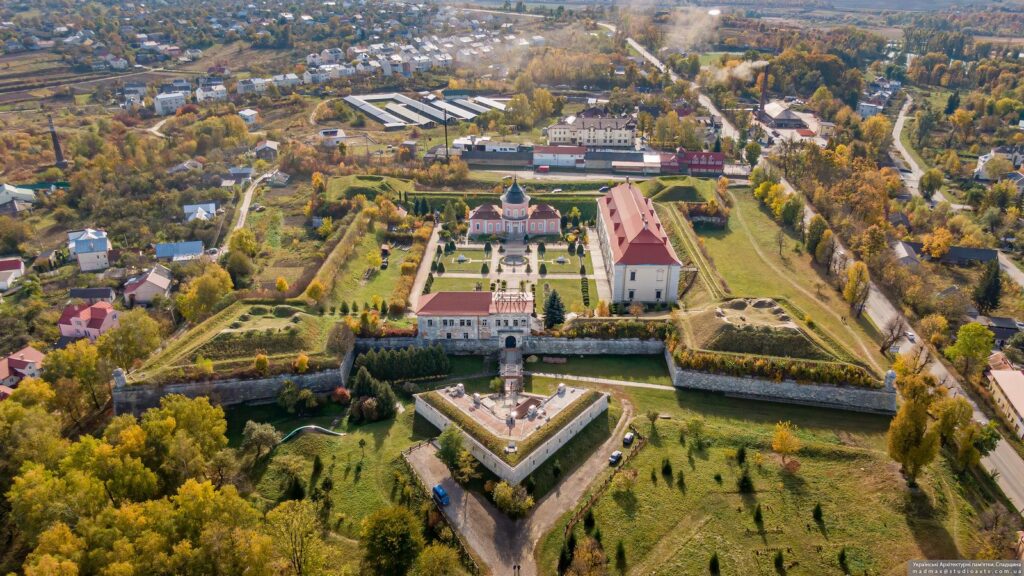 Zolochiv Castle was a residence of the Sobieski noble family on a hill at the confluence of two small rivers in the south-eastern part of Zolochiv (Polish: Złoczów), Galicia (now part of Ukraine’s Lviv Oblast). The rectangular fort was built in 1634-36 by Jakub Sobieski using the labor of enslaved Crimean Tatars.
Zolochiv Castle was a residence of the Sobieski noble family on a hill at the confluence of two small rivers in the south-eastern part of Zolochiv (Polish: Złoczów), Galicia (now part of Ukraine’s Lviv Oblast). The rectangular fort was built in 1634-36 by Jakub Sobieski using the labor of enslaved Crimean Tatars.
In 1672, the castle was taken after a 6-days siege by the Turks. Three years later, it survived a new siege by the Ottoman army. After Jakub Ludwik Sobieski’s death in 1737, the castle passed to the Radziwiłł princely family and in 1801 to Count Łukasz Komarnicki-Pawlikowicz (of the House of Sas), whose heirs sold it to the Austrian crown in 1834. In the 19th century, the castle was adapted for use as a hospital and barracks.
It was turned into a prison in 1872 and continued in use as such until the start of World War II. There is a chapel commemorating the victims of the NKVD on the grounds of the castle. During the war, thousands of people belonging to the Jewish faith were taken from Zolochiv and killed by the Germans via Operation Barbarossa.
Since 1985, the complex has been undergoing restoration supervised by the Lviv Art Gallery. Recently it began to open its grounds for visitors.
If you’ve got any questions, please do not hesitate to call, text or email us. We’re here to help you.
+380 (50) 242 75 54
dborysenko@gmail.com
ancestry@ukrainian-ancestry.com